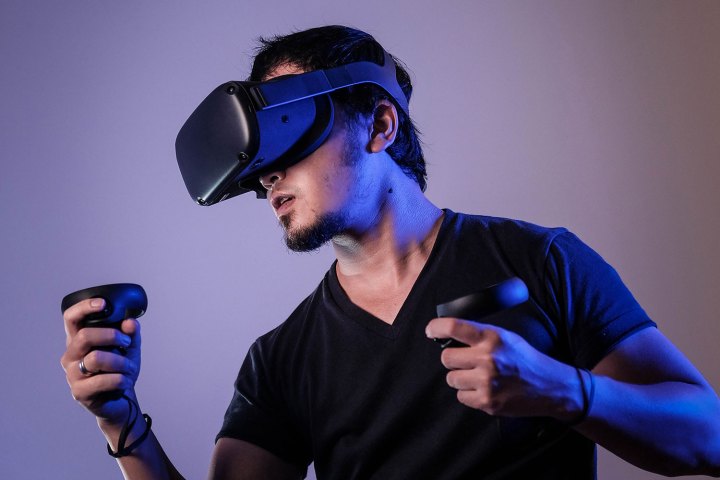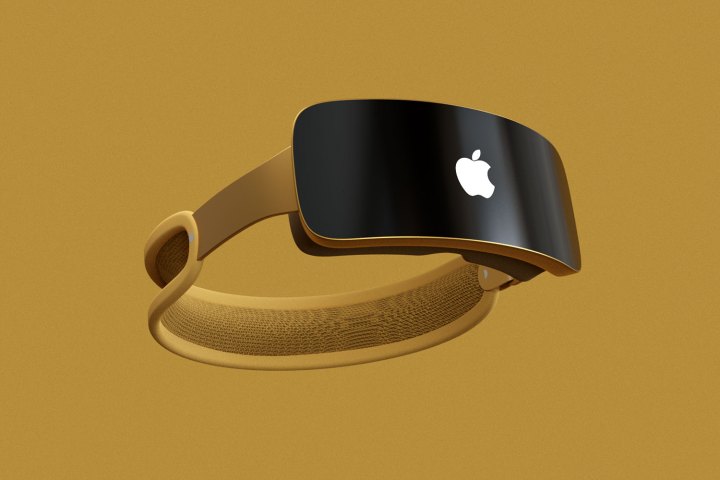Apple’s forthcoming Reality Pro headset hasn’t even launched, yet it’s already been plagued by negative stories and general skepticism about its prospects. Yet a new report claims Apple is going to come out swinging with a full gamut of blockbuster apps and games for its high-end device, all in an attempt to win over wary customers.
First reported by Bloomberg journalist Mark Gurman, Apple is apparently building a host of apps and experiences that will entice people to shell out around $3,000 for the mixed-reality headset. These will include games, workouts, collaboration tools, and much more, with a mixture of virtual reality (VR) and augmented reality (AR) options.

All this is necessary for a few reasons. Firstly, mixed-reality headsets are still a new, niche market, and many of Apple’s potential customers will have never tried one. Apple will need to convince these newcomers that its headset is fun and easy to use, not a confusing and intimidating device.
The second issue is the Reality Pro’s high price. Expected to cost $3,000, it will be more expensive than most rivals devices. As such, customers are likely to be much more cautious about buying one. If Apple can create an enticing software ecosystem for its headset, it might be able to ease people’s concerns about the financial outlay.
Immersive experiences

Gurman states that a big part of Apple’s strategy involves tweaking existing iPad apps to its VR and AR world. The company has apparently adapted many of its existing iPad apps and optimized them for the headset experience, including Safari, Calendars, Maps, FaceTime and more.
Some of these modified apps will feature immersive experiences that make use of the Reality Pro’s capabilities. Apple Fitness+ will incorporate VR instructors for its workouts, while the Freeform collaboration app could let you work together with other Apple headset users on virtual whiteboards. Another key experience is TV viewing, with the Apple TV app rumored to let you watch sports or movies in immersive environments like a desert or the sky, according to Gurman.
FaceTime could also create 3D renderings of call participants within a VR meeting room, something Meta has attempted to do with its Quest Pro headset. Meta’s efforts have not met with a particularly positive reception, however, so it remains to be seen whether Apple can succeed where its rival has stumbled.
Pitching to developers

Being able to achieve that will depend in large part on whether Apple can get developers on board to build the kinds of killer apps that will help the headset break out into the mainstream.
It is apparently no accident that Apple is expected to unveil the Reality Pro at its Worldwide Developers Conference (WWDC) in June, an event that will be packed to the gills with developers and will feature a week of hands-on sessions to give attendees time to learn about the headset and the xrOS operating system that will power it.
Yet Apple doesn’t just want to attract developers focusing on content consumption apps — it also wants the Reality Pro device to become a key tool in content creation. It will allegedly support apps like Pages, Keynote, GarageBand and iMovie, all for creating documents, music and movies. Gaming will also be an important focus, and Apple is rumored to be working with games developers on bringing their products to the headset.
How xrOS will work

We’ve heard before that Apple is building a dedicated operating system for the Reality Pro headset, dubbed xrOS. In his latest report, Gurman revealed a few new details about this system.
For one thing, xrOS “will be able to run multiple apps at the same time, floating within the mixed-reality interface.” This includes the ability to remember where you were when using a certain app. For instance, if you were using Safari in your kitchen, moved to another room, then back to the kitchen, your web browser would reappear where you left off each time.
The operating system is based on iOS, Gurman says, which will help make the process of bridging existing apps to the new device much easier. In fact, the reporter states that headset users will be able to use “millions of existing apps from third-party developers.” The iOS parallels will be seen in the form of a familiar-looking home screen with floating app icons, as well as the addition of Apple’s Control Center for controlling volume, Bluetooth and Wi-Fi.
You’ll be able to use all these apps with a combination of hand-tracking and eye-tracking, swiping through virtual menus with your fingers and typing on virtual keyboards in midair (although the headset will also connect to physical keyboards too). Apple has also created a form of biometric security that scans a user’s eyes to unlock the device.
With all these software features apparently in the works, Apple is clearly making a strong push to appeal to customers and convince them the Reality Pro is worth its $3,000 price tag. Whether those efforts can actually win over the market remains to be seen, but we’ll all have a better idea at WWDC in June. As Gurman himself has previously argued, it could be one of the most critical events in Apple’s history.



